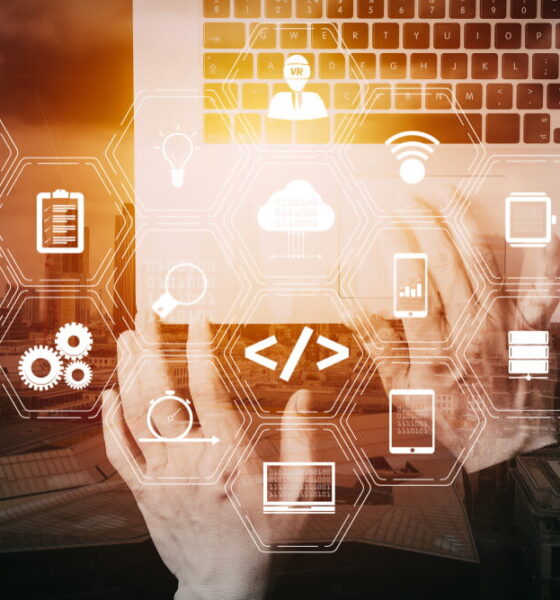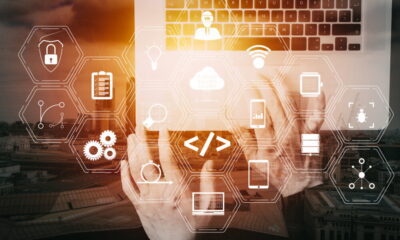

Features
Development Life Cycle Models For Sustainable Software Companies
Green businesses practices are playing a pivotal role in many industries. The software sector is one of the industries that is becoming more reliant on sustainable practices.
Investopedia has talked in depth about the eco-friendly software companies that are changing the world. These eco-friendly companies are going to make a major mark on the world in the months to come.
There are many elements that will come to shape the future of eco-friendly business practices in the software industry. Green software companies are going to have to adapt their development life cycle models accordingly.
Sustainable Practices Transform the Future of Software
A number of software companies are developing technology to streamline their clients’ business models. One software company raised $57 million in funding to develop a new application that would help utilities maximize efficiency. Another software company has developed applications that help contractors find the most energy efficient approaches to home renovation.
But some green software companies are struggling to find their sweet spots. The following guidelines can be beneficial.
Grasping the Life Cycle Models for Sustainable Software Companies
Software Development Life Cycle Models or SDLC are sets of methodologies of how a product is developed and turned into a business. The cycle is about turning your ideas, market research findings, and insightful findings into applicable features or functionality on your products. There are actually various ways to bring your product design to life represented by using one of ten SDLC models. They all work within the context of an eco-friendly business model. These are advantages and disadvantages of each software development model:
1. Waterfall SDLC Model
Waterfall SDLC methodology hosts five stages from requirements to maintenance and is considered as the simplest model for green software companies. The governmental and public service are the main users of the waterfall methodology, especially when working on sustainable development projects. The advantages of SDLC waterfall include the speedy phases, well-maintained time scales, running on a budget, easy testing, very clear output, design issues are handled upfront the process, and plan-result concordance. However, the waterfall models are obviously less flexible, harder to define, and may take a longer time to deliver. Simple or static product development can benefit from this model with no problem.
2. V-Shaped SDLC Model
The V model is the extended version of waterfall methodology that employs staged testing phases. The advantages of V mode for eco-friendly software companies include preliminary tests that enhance the success rate. The V method is also very easy to manage with clear objectives declared in each phase while tracing the potential defects before magnifying in the outcome. Other advantages are staged process, time saving, well-defined deliverables, on-budget execution, and wider coverage. The disadvantages include inflexibility, exhausting process, less secure, and not precise method. Overall, small product development projects can optimally benefit from the V model.
3. Incremental SDLC Model
Incremental SDLC Models is a modular development process that splits into multiple iteration modules at the parallel or sequential system. Each module covers analysis, design, code, and test that run incrementally through phases. The advantages of incremental models include quick software generation through on-going process, more flexibility for changes, cost-effective, customer involvements, and easy error identification. However, the incremental model also has disadvantages including exhausting design & plan, ongoing process compatibility issues, and thorough corrections for one issue. Incremental method is commonly used for web-based application.
4.Iterative SDLC Model
Iterative development models also employ iteration modules like incremental methodology except that they keep evolving and growing. This model has extensive advantages including upfront functional prototypes, early defect identification, quicker designing time, measurable progress, easy change implementation, upfront risk identification, lower operating time, real-product-based customer feedback. The disadvantages include expensive process, high technical skill requirements, and system architecture issues, and high project management requirements. This development model is suitable for web services or microservices.
5. Spiral SDLC Model
Spiral SDLC is a development model that focuses on comprehensive risk assessment during the process. The advantages of the spiral model include flexibility, cost-effective process, complex projects catered, large projects welcomed, reliable monitoring, client-approval-driven decisions, lower risk with analysis, ongoing requirement accommodation, and customizable results. The disadvantages of spiral SDLC include expensive process, specialist-grade expertise requirement, not independent process, heavy documentation, complex, and no fixed timeline for the project. It’s ideal for R&D activities and complicated product development projects.
6. Rational Unified Process(RUP)
RUP is an elaboration of an iterative and waterfall model where the process involves four phases that each accommodate six activities. The advantages of RUP model include time-consuming project, prototyping that work, measurable progress, cost-effective change implementation, upfront recognition of potential defects, end product in each phase, shorted operating time, and so forth. RUP actually shares similar disadvantages with the RUP model including high project management requirement, resource consuming process, stretched project timeline, and high skilled technician requirements. RUP SDLC model is ideal for high-risk and large projects to make a more sophisticated software.
7. Rapid Application Development (RAD)
RAD is a hybrid SDLC model that elaborate iterative development and prototyping involving four or five phases. The major advantages of RAD model include ROI-driven process, rigid planning for thorough accommodations, prototyping that works, advantageous backlogging, less costly development process and ending process with delivered product. You can actually access and test the end product. The disadvantages of RAD model include time-consuming initial stage, labor intensive coding, and long project line depending on the resources. RAD SDLC model is ideal for design-based projects that employ modelling.
8. Big Bang SDLC Model
The Big Bang development model is another simple process that even requires no planning. Big bang methodology offers extensive methodology including simple development architecture, easy project management, real zero planning, high flexibility, minimum resource requirements, and helpful method for first timers. While it looks legit, the Big Bang model has disadvantages you should take into account including a high risk model, complex projects not accommodated, low degree of certainty, ongoing development projects not supported, and costly changes. It’s ideal for academic projects, small developer teams, small projects, and no-requirement-specific projects.
9. Prototyping SDLC
Prototyping is more like a SDLC approach than a fixed development methodology. The SDLC approach works by creating a prototype to gather and analyze customer feedback. The advantages of the prototype model include early error identification, efficient accommodating process, valuable customer feedback for solutions, identifiable tricky functions, and quicker process. Prototype model also has its advantages including a more complex system to operate, only usable when completed, an undesirable widened scope of the system, and so forth. It’s ideal for products that require end-user interactions and approval.
10. Agile Methodology
Agile SDLC is a hybrid iterative-incremental development methodology that hosts evolving requirements and solutions through six phases during the process. The advantages include less exhaustive planning, ongoing modular testing, high project visibility, quicker product or software delivery, and manageable changes with more flexibility. However, Agile methods also come with disadvantages including high developing skill requirements, labour extensive teamwork, uncertain project, and unrealistic iteration. The methodology comes in three different types including Scrum, Extreme Programming(XP), and Kaban. In general, the Agile SDLC model is ideal for most types of projects including the ones with changing requirements and high client involvement.
These 10 Models Are Ideal for Sustainable Software Companies
There are extensive SDLC models coming with different approaches in processing the elements of development. They can be invaluable for eco-friendly software companies. Each model, due to its features and limitations, has different best applications on projects. Most of those SDLC models employ similar phases but with different methodologies. Choosing the SDLC model should refer to the project and what it needs to accommodate in the software.
Compensation software solutions also allow your employees to take advantage of work from home. Since the pandemic, there has been a huge shift in eco-friendly companies that are taking advantage of the situation by providing work from home solutions.


 Environment10 months ago
Environment10 months agoAre Polymer Banknotes: an Eco-Friendly Trend or a Groundswell?

 Environment12 months ago
Environment12 months agoEco-Friendly Home Improvements: Top 7 Upgrades for 2025

 Features9 months ago
Features9 months agoEco-Friendly Cryptocurrencies: Sustainable Investment Choices

 Features10 months ago
Features10 months agoEco-Friendly Crypto Traders Must Find the Right Exchange





























